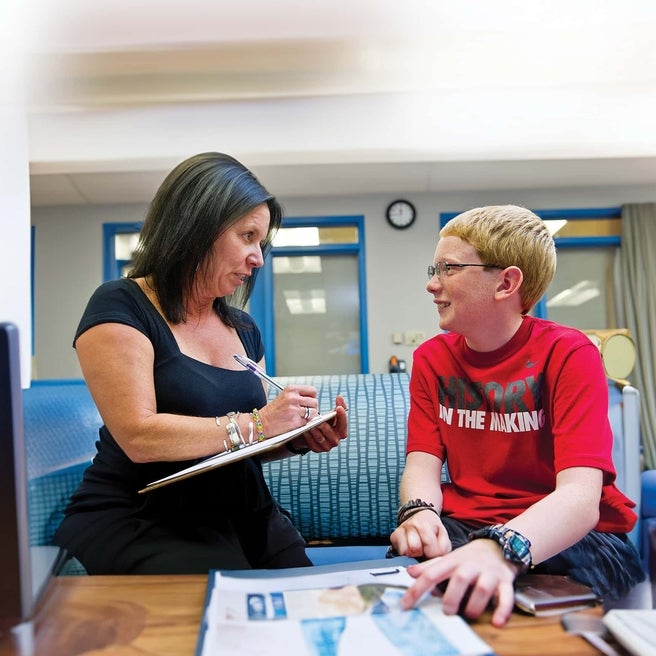What is functional vision?
Vision is more than a person’s ability to see things clearly from near or far away. People need several important visual skills to participate in daily activities and routines at home, school, and work — in other words, to function in their environment.
The functional vision includes three categories: visual integrity, visual efficiency, and visual processing.
1. Visual Integrity
Visual integrity is what most people think of when they think of vision. It includes:
- Visual acuity: clarity of vision, where normal vision is described as 20/20
- Refraction: whether someone is nearsighted or farsighted or has an astigmatism
Visual integrity considers the presence of eye diseases (such as cataracts or glaucoma) and a person’s visual fields. Normal visual fields include 180 degrees of horizontal vision and 150 degrees of vertical vision. Children could lose part of their visual field from a brain injury such as a stroke or a brain tumor.
2. Visual efficiency
Visual efficiency refers to how well the visual system gathers visual information. The primary visual efficiency skills are:
- Eye movements, which include two key skills:
- Visual saccades: the rapid eye movements that allow a person to quickly scan a scene. These can range from small movements during reading to large movements such as when visually scanning a room. Difficulty coordinating these eye movements can impact a child’s ability to read quickly, comfortably, and with comprehension. The result might be a child losing their place when reading, skipping lines, or using excessive head movements. A child might seem to have a poor attention span.
- Visual pursuits: the coordination of eye movement when following a moving object, such as a moving ball. Difficulties with this can negatively impact reading and reading comprehension, and it can affect the ability to participate in activities with moving objects like driving and sports.
- Binocular vision skills, or the ability of the eyes to work together as a team. Binocular vision allows a person’s two eyes to see a single clear vision. One binocular vision problem is strabismus, which is when a person’s eyes are not aligned. Strabismus is also called "wandering eye" or "crossed eyes."
Children can be born having difficulty with eye movements or binocular vision. Difficulties with these skills are more common in children with certain developmental disabilities, such as cerebral palsy, Down syndrome, and autism, and in children with learning disabilities. Difficulties with these skills can occur after a brain injury such as a concussion or stroke.
3. Visual processing
The primary visual processing skills are:
- Visual perception includes a person’s ability to tell the difference between forms and shapes; remember what was seen; understand how objects relate to each other in space; and find an object hidden in a busy environment. Difficulties with visual perception skills can negatively impact school performance. Without these skills, it can be hard to learn letters and numbers, retrieve key information, and organize schoolwork and space.
- Visual motor integration is the ability of the eyes and hands to work together in smooth, efficient patterns. This is commonly called eye-hand coordination. This skill allows a person to perform daily activities such as getting dressed, managing buttons, and tying shoes. This skill is also linked to learning to write and to cut with scissors.
How can I get my child’s functional vision evaluated?
To have your child’s eye movement skills or other vision skills screened at Children’s Hospital of Philadelphia, call 215-590-5819 to schedule a functional vision evaluation with occupational therapy. You will need a prescription for occupational therapy from your pediatrician or another physician before your child can participate in an evaluation.
You can also call the Division of Ophthalmology at 215-590-2791. Make sure to request an appointment with Optometry’s to receive a vision evaluation that includes assessment of your child’s eye movement skills.
Could it be anyone on the optometry team? We generally try to avoid listing one individual and instead list the best referral path #/division for intake in case that individual is busy or leaves
Dr. Perno is the only provider at this time who completes the type of functional vision evaluation detailed in this document.
Treatment of functional vision
For many visual skill deficits, your child can receive occupational therapy sessions to help improve these skills.
Resources to help
Occupational Therapy Resources
We have gathered resources to give you useful information, including transportation resources. We hope this makes your family's life a little easier.
